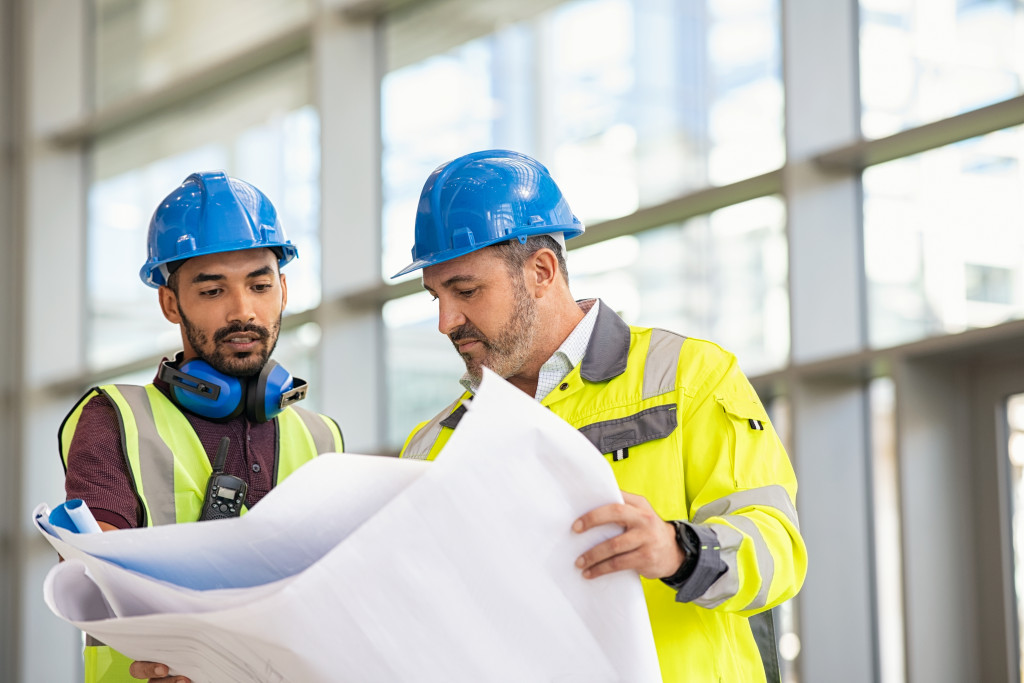- Effective planning, budgeting, and hiring experienced professionals are essential for cost-efficient commercial building construction.
- Efficient project management, clear communication, and risk mitigation help control expenses and prevent delays.
- Incorporating energy-efficient and sustainable features can lead to long-term cost savings and potential certifications.
- Post-construction efficiency, tenant considerations, and tax benefits contribute to ongoing cost management and profitability.
When constructing a commercial building, you enter a world of opportunities, challenges, and financial considerations. The venture demands careful planning and execution to ensure your investment yields profitable returns. Whether you’re a seasoned developer or a first-time commercial property owner, this comprehensive guide will walk you through cost-efficient strategies to consider when constructing commercial buildings.
The Foundations of Success: Planning and Design
Starting with a solid plan is essential before laying the first brick or pouring the first concrete slab. Planning and design are the bedrock of a cost-efficient commercial building project.
Define Your Purpose
Begin by defining the purpose of your commercial building. Is it an office space, a retail establishment, a warehouse, or a combination of these? Understanding the specific needs and functions of your building will help you make informed decisions throughout the construction process.
Develop a Realistic Budget
One of the most crucial aspects of cost-efficient construction is setting a realistic budget. Consider all expenses, including construction materials, labor costs, permits, and contingency funds for unexpected issues. Building a commercial structure can be a substantial financial commitment, so being financially prepared is crucial.
Engage with Experienced Professionals

Constructing a commercial building is a complex endeavor that requires a team of experienced professionals. Hire an architect, engineer, and construction manager specializing in commercial projects. They will ensure your building meets local building codes, safety standards, and industry best practices.
Leverage Sustainable Design
Incorporating sustainable design principles into your commercial building can save long-term costs. Energy-efficient lighting, HVAC systems, and insulation can significantly reduce operational expenses over the life of the building. Sustainable buildings often receive tax incentives and rebates, further improving your bottom line.
Considering Durable Post-Frame Commercial Buildings
While considering various design options, don’t overlook the potential benefits of post-frame construction. Durable post-frame commercial buildings are a cost-efficient and versatile choice for many applications. The structural system of vertical posts and horizontal beams allows for spacious interiors without extensive load-bearing walls. This design can be particularly advantageous for warehouses, storage facilities, and agricultural buildings.
Strategic Materials and Construction Methods
Once you’ve laid the groundwork with a well-thought-out plan, it’s time to focus on the materials and construction methods that will help you achieve cost-efficiency without compromising quality and durability.
Optimize Material Selection
Careful material selection is crucial for managing construction costs. Consider local availability and pricing when choosing materials. Additionally, explore recycled or reclaimed materials, which can be environmentally friendly and cost-effective. For example, using reclaimed wood for interior finishes or structural elements can add character to your commercial building while reducing expenses.
Maintenance-Friendly Design
Thinking long-term, design your commercial building with maintenance in mind. Easy-to-maintain features can reduce ongoing operational costs. For instance, choose durable exterior finishes that require minimal upkeep and select low-maintenance landscaping options. Properly designed drainage systems can also prevent water damage, reducing future repair expenses.
Efficiency in Project Management
Effective project management is the glue that holds all the pieces of your commercial construction project together. Ensuring efficient coordination and oversight can prevent costly delays and mistakes.
Clear Communication
Establish clear lines of communication with your project team. Regular meetings and updates keep everyone on the same page and allow for swift problem-solving. Effective communication can help avoid misunderstandings leading to costly changes or delays.
Streamlined Permitting Process
Navigating the permitting process can be a time-consuming and potentially costly endeavor. Work closely with your local authorities to understand the requirements and expedite the approval process. Any delays in permitting can lead to increased construction costs.
Construction Scheduling
Creating a realistic construction schedule is essential for cost control. Delays can be expensive due to increased labor costs and extended project durations. Utilize project management software to track progress and make necessary adjustments to keep the project on track.
Quality Control

Implement a robust quality control system to ensure that work is done correctly the first time. Catching and correcting mistakes during construction is far less expensive than addressing them after completion. Regular inspections and quality checks can save you money in the long run.
Energy-Efficient Systems
Invest in energy-efficient heating, ventilation, air conditioning (HVAC), and lighting solutions. These systems can significantly reduce utility costs over the life of your commercial building. Additionally, consider using renewable energy sources like solar panels to generate electricity and lower energy expenses.
Post-Construction Efficiency and Cost Management
Once your commercial building is completed, cost-efficient strategies should extend beyond construction and into the post-construction phase.
Tenant Considerations
If you’re leasing space in your commercial building, consider the needs of your tenants. Well-maintained and energy-efficient spaces are more attractive to tenants and can lead to higher occupancy rates and rent levels. Happy tenants are more likely to stay, reducing vacancy-related expenses.
Tax Benefits
Explore potential tax benefits related to your commercial building. Certain energy-efficient features and building improvements may qualify for tax credits or deductions. Consult with a tax professional to ensure you take full advantage of available incentives.
Performance Monitoring
Continuously monitor the performance of your commercial building’s systems, such as HVAC and lighting. Modern building automation systems can help optimize energy usage and reduce operational costs. Regularly reviewing utility bills and performance data can identify areas for improvement.
Constructing a cost-efficient commercial building is a multifaceted endeavor that involves careful planning, strategic decision-making, and ongoing management. By implementing these strategies and staying vigilant in post-construction management, you can maximize the return on your commercial building investment while minimizing financial risks.


